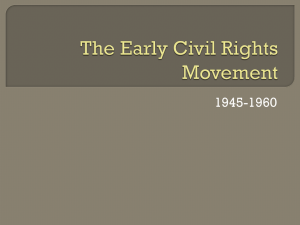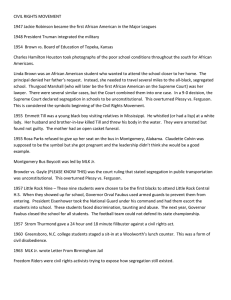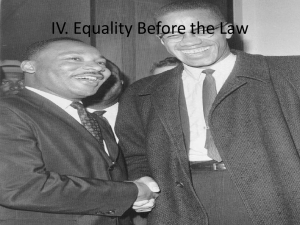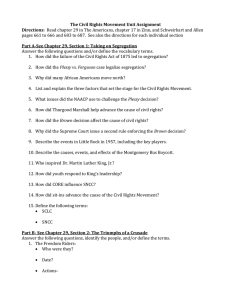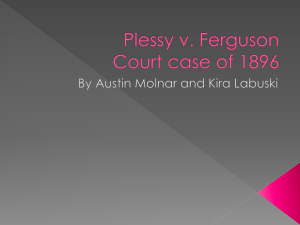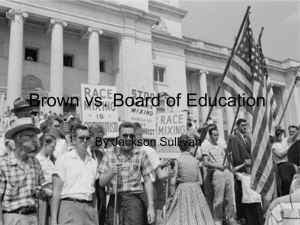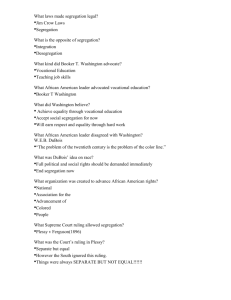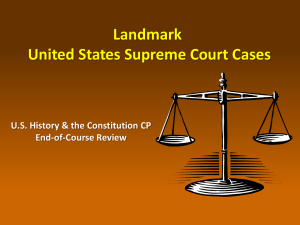Origins of the Civil Rights Movement ppt
advertisement
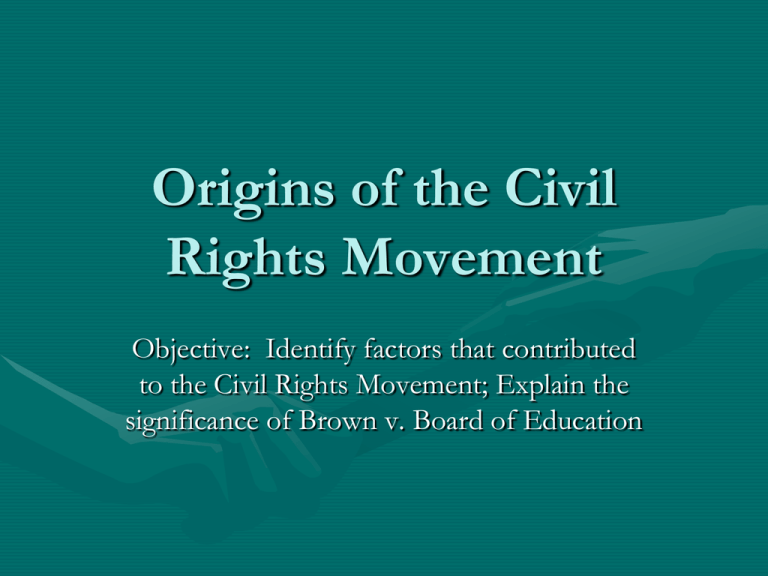
Origins of the Civil Rights Movement Objective: Identify factors that contributed to the Civil Rights Movement; Explain the significance of Brown v. Board of Education How did WWII change attitudes about segregation? • Americans began to see racism as evil • War had made African Americans more determined to win equality at home in jobs, housing, and education • African Americans gained important resources to help fight segregation. CORE • Congress of Racial Equality founded in 1942 in Chicago • Carried out protests in public places that refused to admit or serve African Americans • Helped end segregation in restaurants and other public places in many Northern cities Explain Plessy v. Ferguson • Louisiana law called for ‘equal but separate accommodations for the white and colored races’ on trains. • June 7, 1892 – Homer Plessy took a seat in a train car reserved for whites. Conductor told him to move, and he refused. • Plessy convicted of breaking the “separate car” law. • Supreme Court decision – “separate but equal” facilities for blacks and whites did not violate the Constitution. • State governments across the south applied decision to all areas of life. • “Jim Crow” laws forced African Americans to use separate restaurants, hotels, train cars, parks, schools, and hospitals. Brown v. Board of Education • Read pages 815 – 816 • Brown v. Board was an important event in the civil rights movement. As you read, list information about the event in a bubble map containing the following information: People, The Argument, The Ruling, Results of the Ruling • People: Thurgood Marshall (chief lawyer for the NAACP), Linda Brown and her family • The Argument: “Separate but equal” schools were inherently unequal; segregated schools denied African Americans the “equal protection of the laws” guaranteed by the 14th Amendment • The Ruling:. unanimous court ruled that segregation in education was unconstitutional • Results of the Ruling: schools must integrate; Court ordered public schools to desegregate “with all deliberate speed” Describe the process of school desegregation in Little Rock • Arkansas Governor Orval Faubus was against integration • orders National Guard troops to prevent African-American students from entering Central High School • Federal judge ruled governor had broken the law; Faubus removed the National Guard • Eisenhower sent federal troops to protect the students • Show The Civil Rights Movement video Activity and Summary • How did the Plessy ruling contribute to segregation? • How did Brown v. Board of Education challenge discrimination in schools? • Why were the actions of Governor Faubus important to the federal government? Activity: Illustrate what the ruling in Brown v. Board of Education called for or what happened at Central High School
